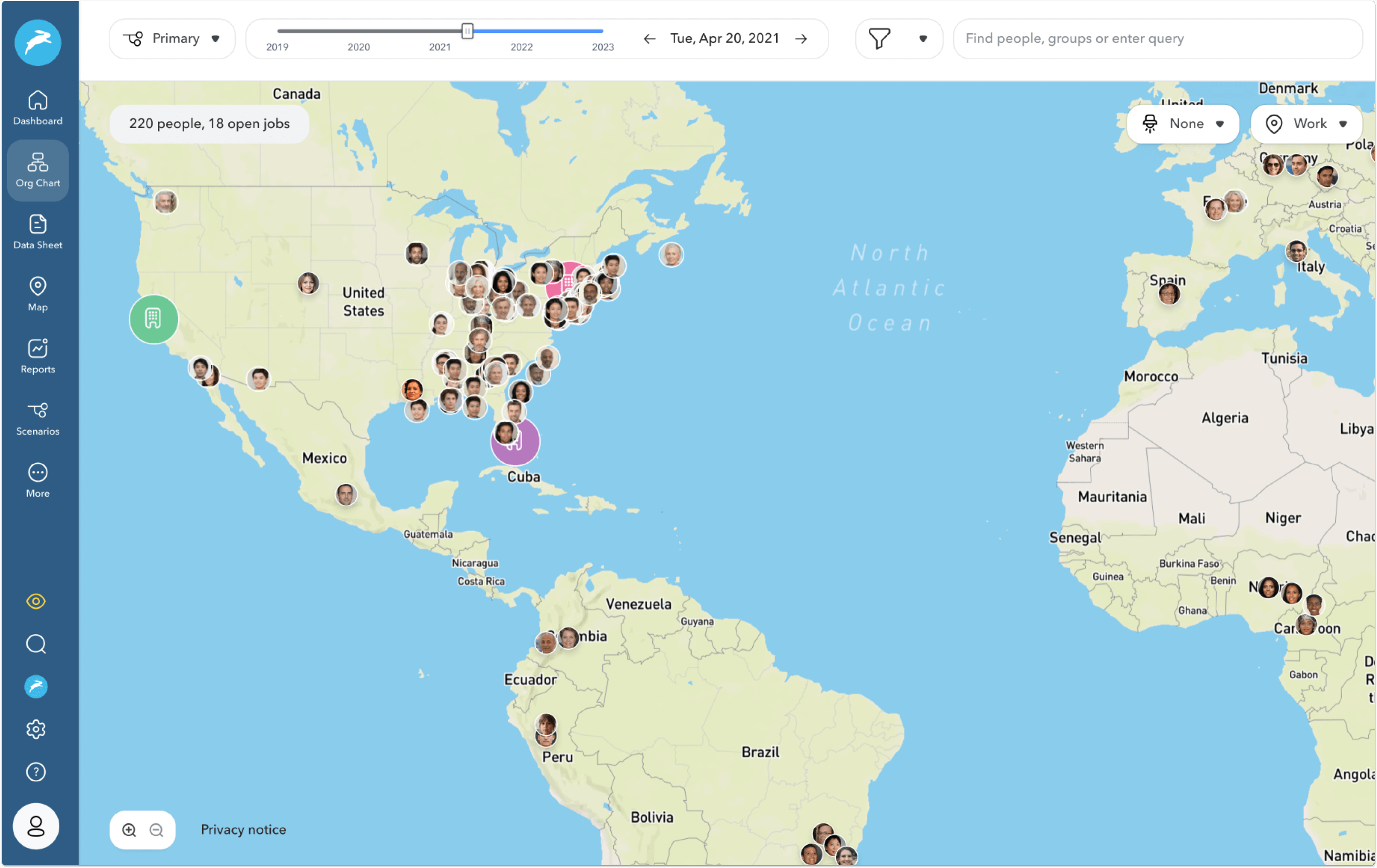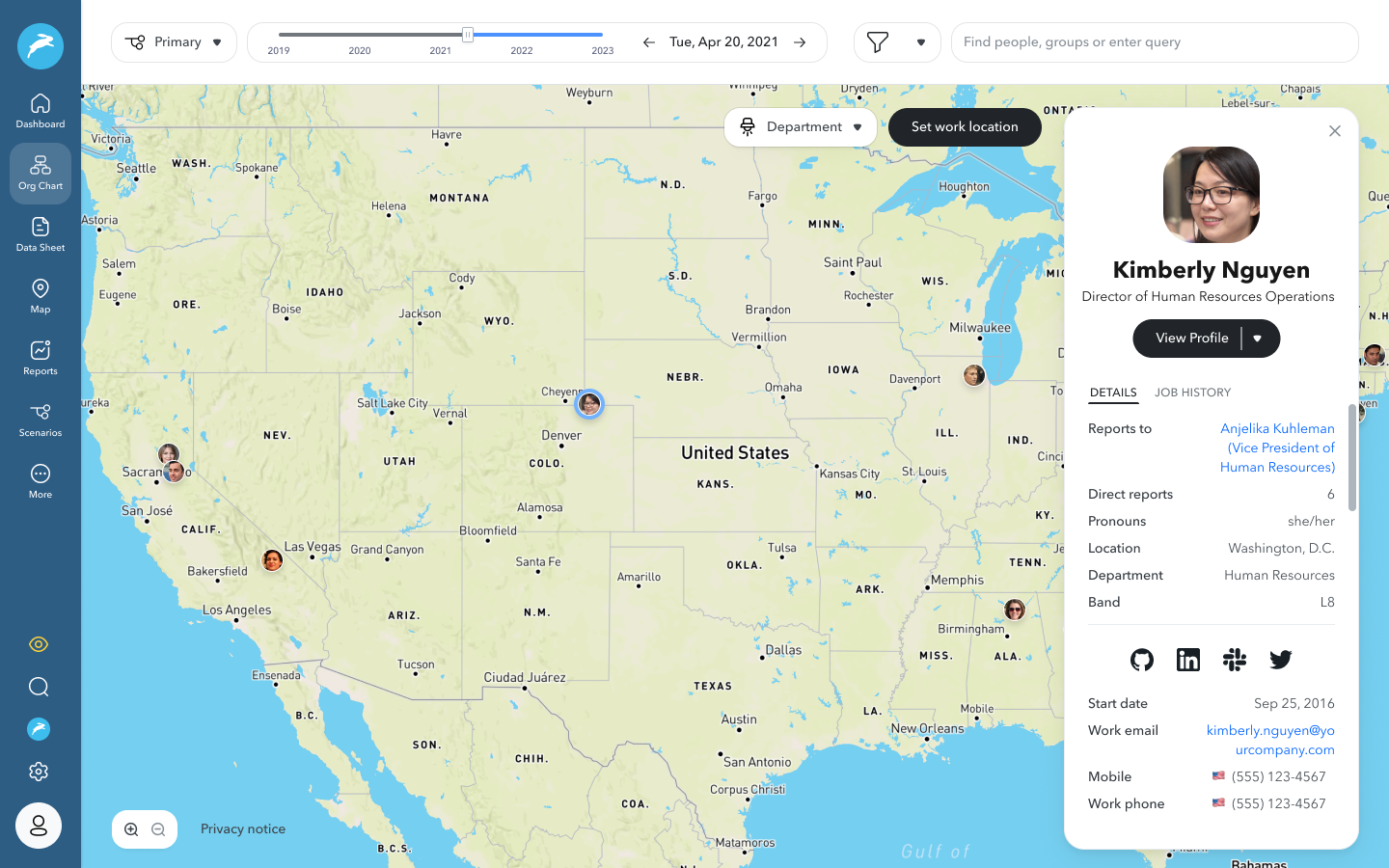In 2017, Zapier offered job applicants $10,000 to move out of the Bay Area. The offer was part of an unconventional compensation plan at that time and sparked a debate about remote work salaries, employee benefits, and living costs.
Four years later, and it seems the idea may have been ahead of its time. HR teams across the United States have been forced to overhaul their compensation plans with similar incentives for remote workers that would have seemed just as extraordinary back then.
In the post-COVID era, organizations need to adjust their compensation plans and develop a fair, transparent compensation philosophy aligned with new remote pay strategies and expanded employee benefits programs if they expect to attract and retain top talent.
Below, we cover the elements you need to include in your post-COVID compensation plan.
A pay strategy for the hybrid workforce
The increase in remote work has complicated pay strategies. Before the pandemic drove workers out of their offices, compensation packages, and base compensation, in particular, were typically set according to the employer’s and employee’s location.

But now, as we reckon with the effects of COVID-19, more work is performed offsite, and, by the end of 2021, it’s predicted that at least 30% of the U.S. workforce will be working from home. This means organizations now need to create fair, competitive compensation plans for employees who don’t share a physical location.
The first step in creating a pay strategy for your hybrid workforce is to revisit your compensation philosophy (check out our guide on how to do that here). You’ll want to review your compensation philosophy to determine whether it needs to be updated to account for the hybrid workforce. If your workforce is spread across the country, you may want to call out your organization’s commitment to pay equity regardless of location in your updated philosophy. Defining your approach to compensation in this way will provide overall guidance on your pay decisions.
Once you’ve refined your compensation philosophy, select your remote pay strategy. Here are potential pay strategy options for distributed teams:
- Universal salary: All employees with the same title are paid the same salary regardless of location. An employee’s salary may be tied to the national average.
- Headquarters salary: Salaries are based on market pay in the employer’s location.
- Employee’s location salary: Pay is linked to market rates in the employee’s location. This is the most common approach.
- Cost of living salary: Salaries are based on the location of the company’s HQ and are adjusted for the employee’s cost of living. The goal of this strategy is to give all employees the same purchasing power.
- Gainsharing: Steve Brink, the CEO of AIRINC, said in gainsharing, companies split the difference between HQ pay and the employee’s cost of living salary. “For example, if the HQ salary is set at $100,000 and the remote worker’s cost of living adjusted salary is $90,000, the ‘gainsharing’ salary would be $95,000 (splitting the difference of $100,000 and $90,000).”
- Special remote pay scale: Greg Caplan, CEO of Remote Year, suggests establishing a “remote pay band.” “Instead of ‘your’ geography and ‘their’ geography, there is a ‘remote’ geography, which stipulates what the remote-based pay is for people in a certain field, title, and level.”
Once you’ve selected a pay structure, you should consider running a salary benchmarking exercise. A salary benchmarking exercise helps ensure employee compensation is fair and competitive.
Your compensation strategy should also account for tax implications for the company and employees. Employees who work out of state might trigger additional income tax obligations for the organization. Some companies may even decide to limit an employee’s ability to move to a particular state to avoid creating a tax liability in a new location.
A pay communication policy
Wage transparency means that all employees have a clear understanding of how pay decisions are made. When your company adopts pay transparency, it doesn’t necessarily mean the organization should always disclose individual salaries across the company—this may end up causing friction. However, companies should always be open about their “salary matrix” to explain how salaries are determined.
In the post-pandemic workplace, wage transparency has become an employee expectation. In its 2021 Compensation and Culture Report, beqom found 58% of employees would consider switching jobs for increased pay transparency.
It used to be that few companies had pay transparency policies—pay transparency was aspirational. But during COVID, most companies were forced to have honest conversations with employees on pay cuts, layoffs, and financial challenges. These discussions required a higher degree of openness between the company and employees.
To address pay transparency, companies should develop a pay communication policy that helps employees understand how salaries are determined.
The first step in developing a pay communication policy is to remote work salaries on the organization’s pay strategy.
Educate managers on the organization’s salary matrix so they can help workers understand how pay—and salary increases—are calculated. PayScale, a compensation software company, encourages managers to bring market data to these conversations. The manager should understand how the employee’s salary fits in the overall market.
HR should also add salary ranges to job postings. In LinkedIn’s 2019 Global Talent Trends report, talent professionals said they included salary information in job ads to improve negotiations and speed up hiring.
Related resources to facilitate remote work
The remote workforce needs to do their work from wherever they are.
Prior to the crisis, HR could provide a standardized set of resources necessary for employees to do their jobs—every employee had access to the same type of desk provided by the company, access to the same internet, and access to the same kind of telephone. And access to these resources could be managed in-house.
Post-COVID, however, compensation packages must account for the resources remote team members need to perform their jobs—whether that’s outsourced real-time tech support and internet credits or an ergonomic chair and noise-canceling headphones.
Tsedal Neeley, the Naylor Fitzhugh Professor of Business Administration at the Harvard Business School, said: “The world has changed. We are using our home furniture. We are using our home Wi-Fi. We are participating in a professional environment from our homes. It only makes sense that organizations help facilitate that for us as we continue to serve people.”
People Ops should review employees’ circumstances to accommodate hybrid work. Consider surveying employees to learn what resources they need to do their jobs away from the office. Recruitment software firm Lever selected a randomized group of employees to survey. Sarah Britton, senior manager of employee operations at Lever, said: “We added ergonomic stipends, work-from-home equipment reimbursement, self-service IT equipment portals and internet reimbursement because many people did not have monitors or desks when we made the quick pivot to working remotely.” It’s also important to consider how you need to accommodate employees with disabilities.
Benefits relevant to both office and remote employees
People Ops teams now believe an investment in a customized benefits program will lead to higher employee satisfaction and morale.
Companies used to offer standard benefits, such as medical and health insurance, retirement accounts, and paid time off, for all employees. Post-COVID, companies are expanding the traditional benefits program to provide ancillary benefits that serve a workforce that is split across the home and office.
Washington Post columnist Karla Miller explored why companies might reevaluate their employee benefits in the era of hybrid work: “In-office meals and game rooms will hold less appeal for those who prefer working from home. Home-office stipends may not entice those who miss the hum and camaraderie of a busy office full of other adults.”
To develop a benefits package that accommodates all employees, engage your workforce in the discussion. In its Future of Benefits report, Care.com found HR teams used employee surveys, one-on-one conversations, and employee focus groups to gather feedback from workers. You might also want to evaluate company benefits against market data through the National Compensation Survey.

According to the Society for Human Resource Management, HR leaders should provide support and education to enable employees to select the most valuable benefits. A “fair and appropriate” benefits package might look like co-working space passes and dependent care reimbursements for remote workers and commuter benefits and on-site childcare for in-office workers.
Turn your compensation plan into a business asset
For most companies, compensation planning now extends beyond setting base pay. Creating a compensation plan that is fair, transparent, and inclusive gives your company a competitive edge in hiring and retaining employees and sets employees up for success—at home and at work.




